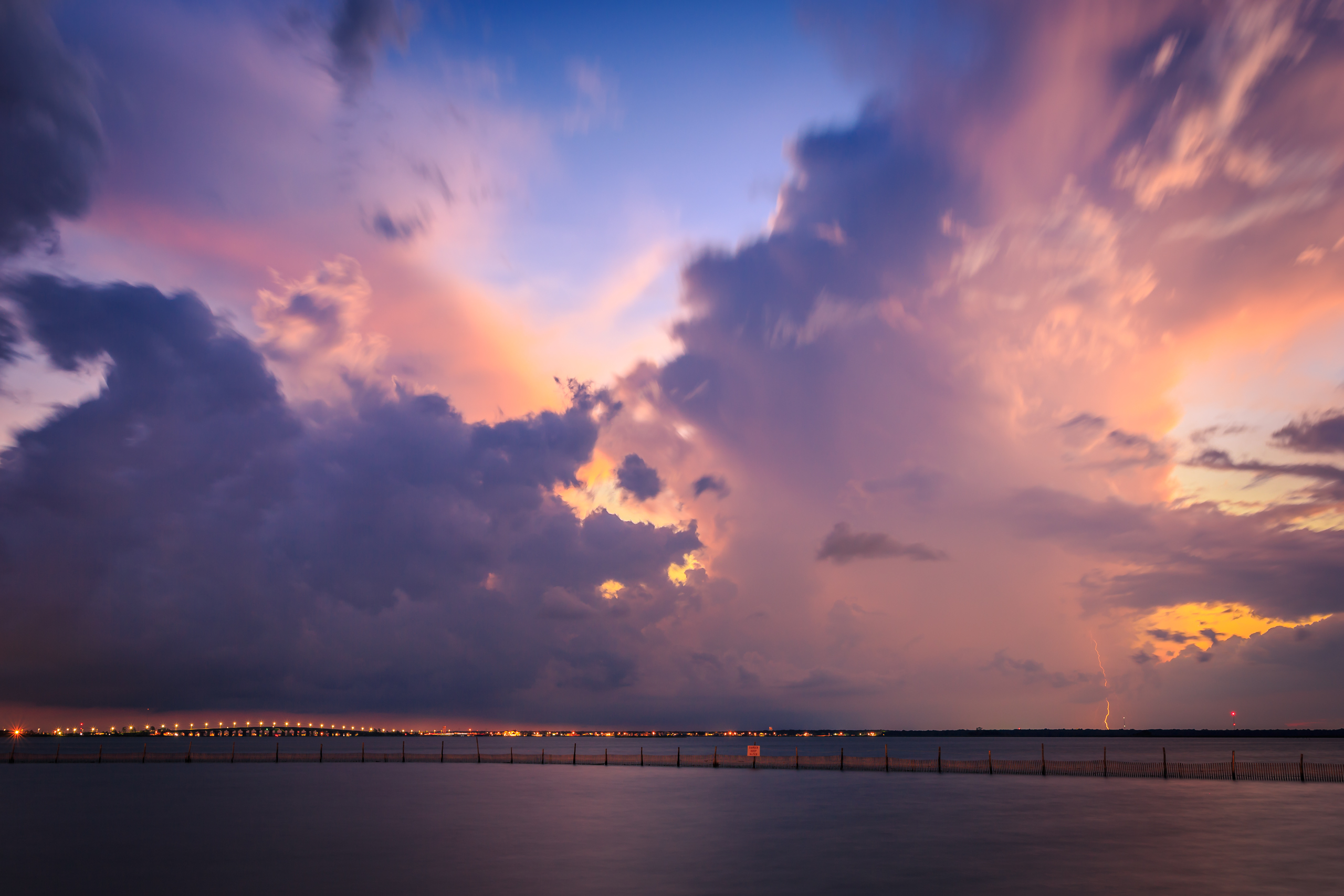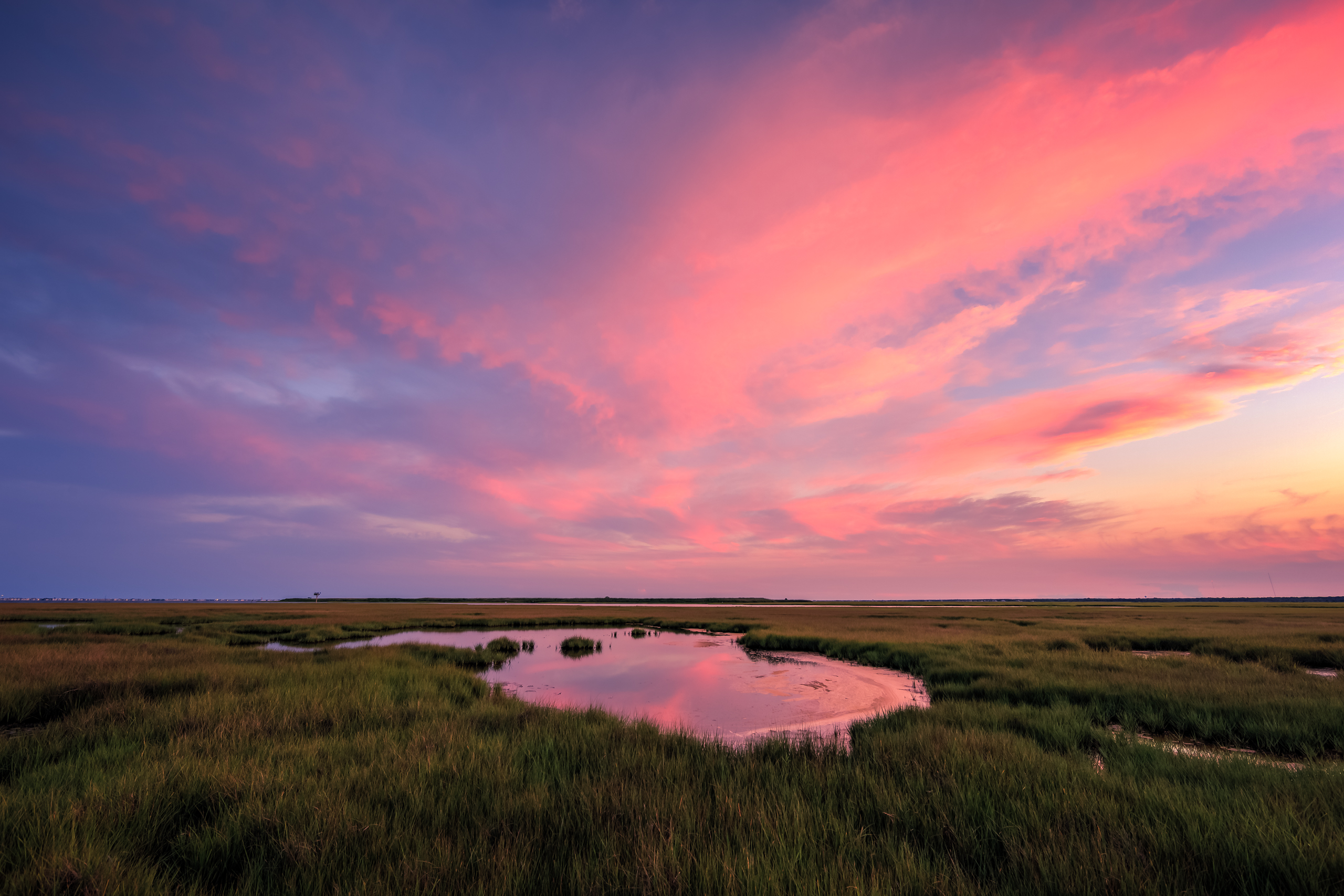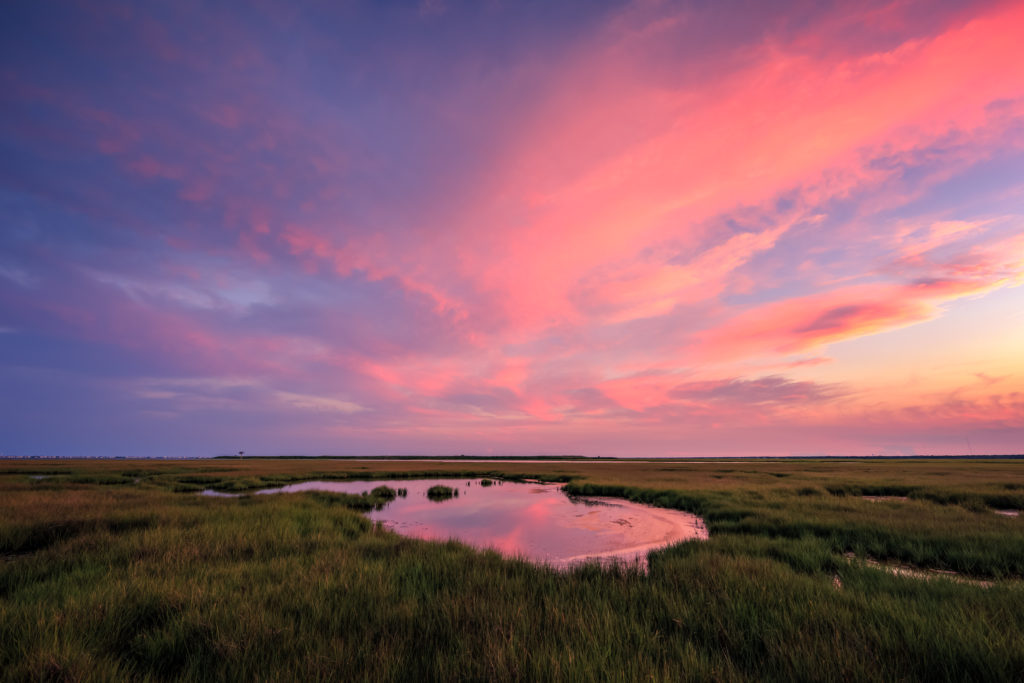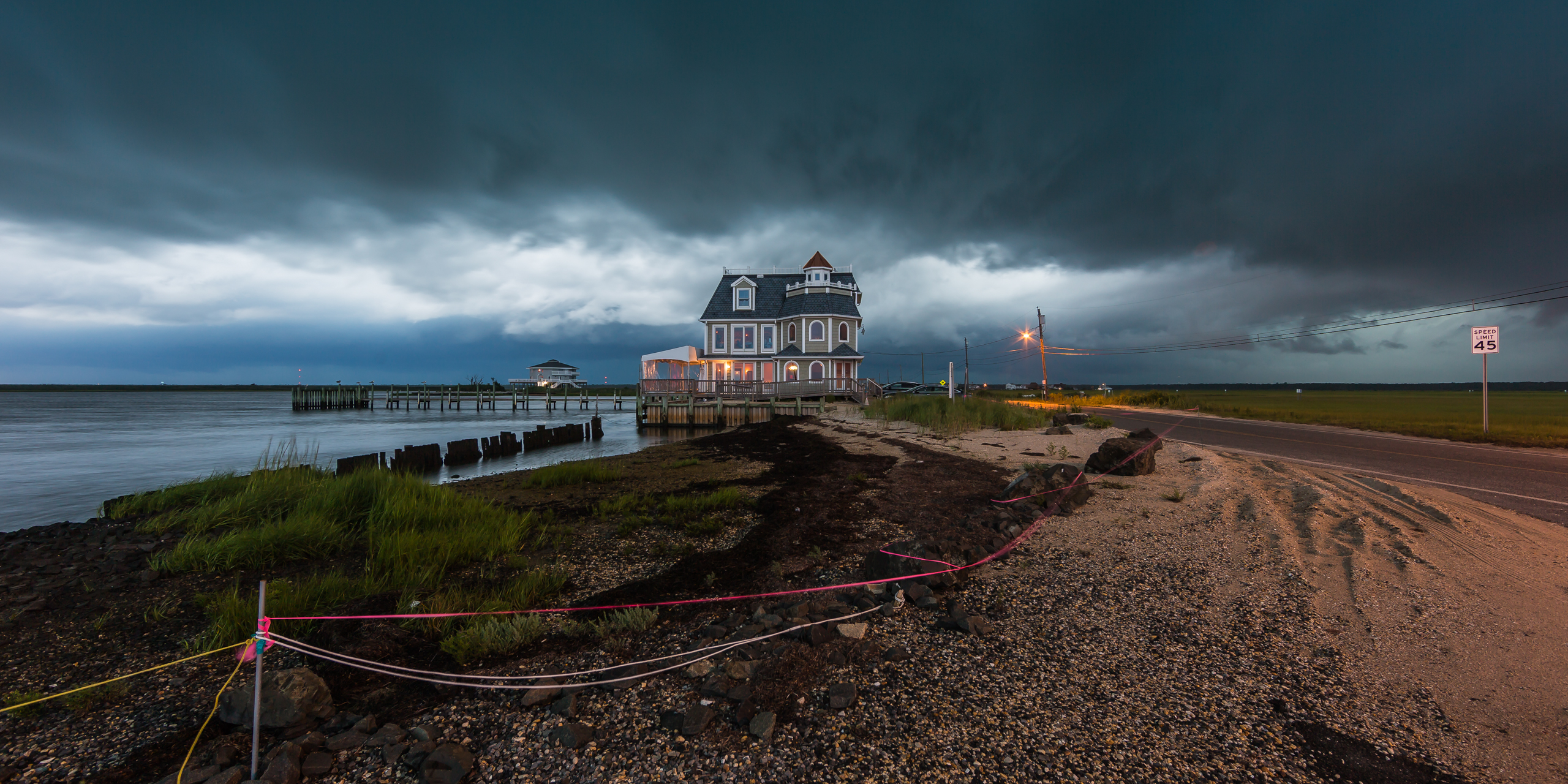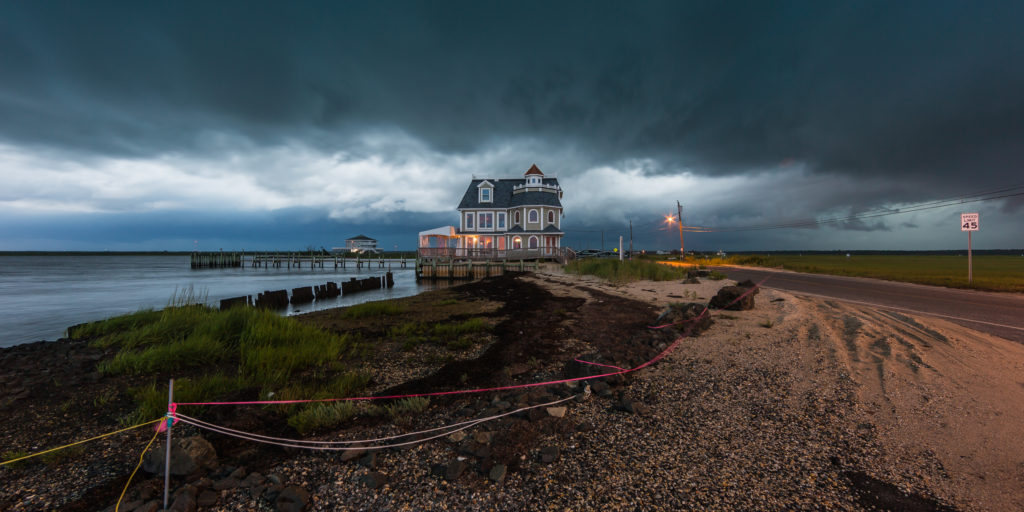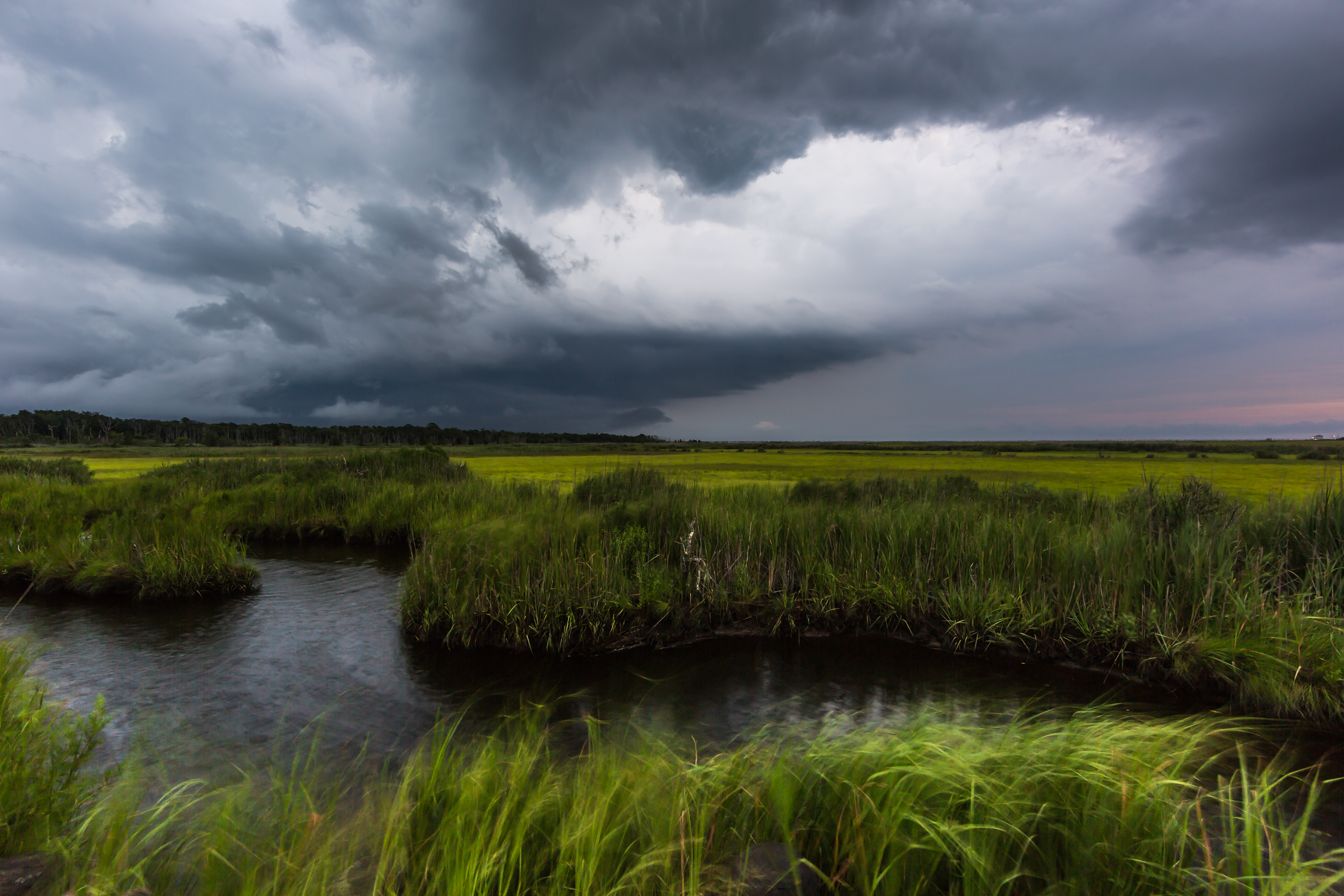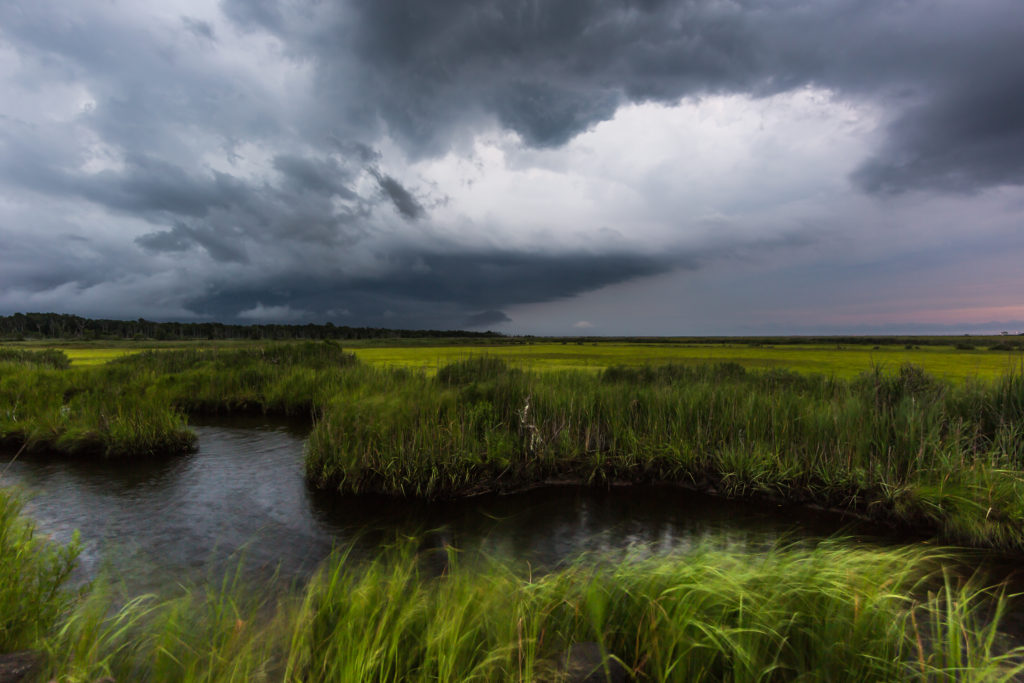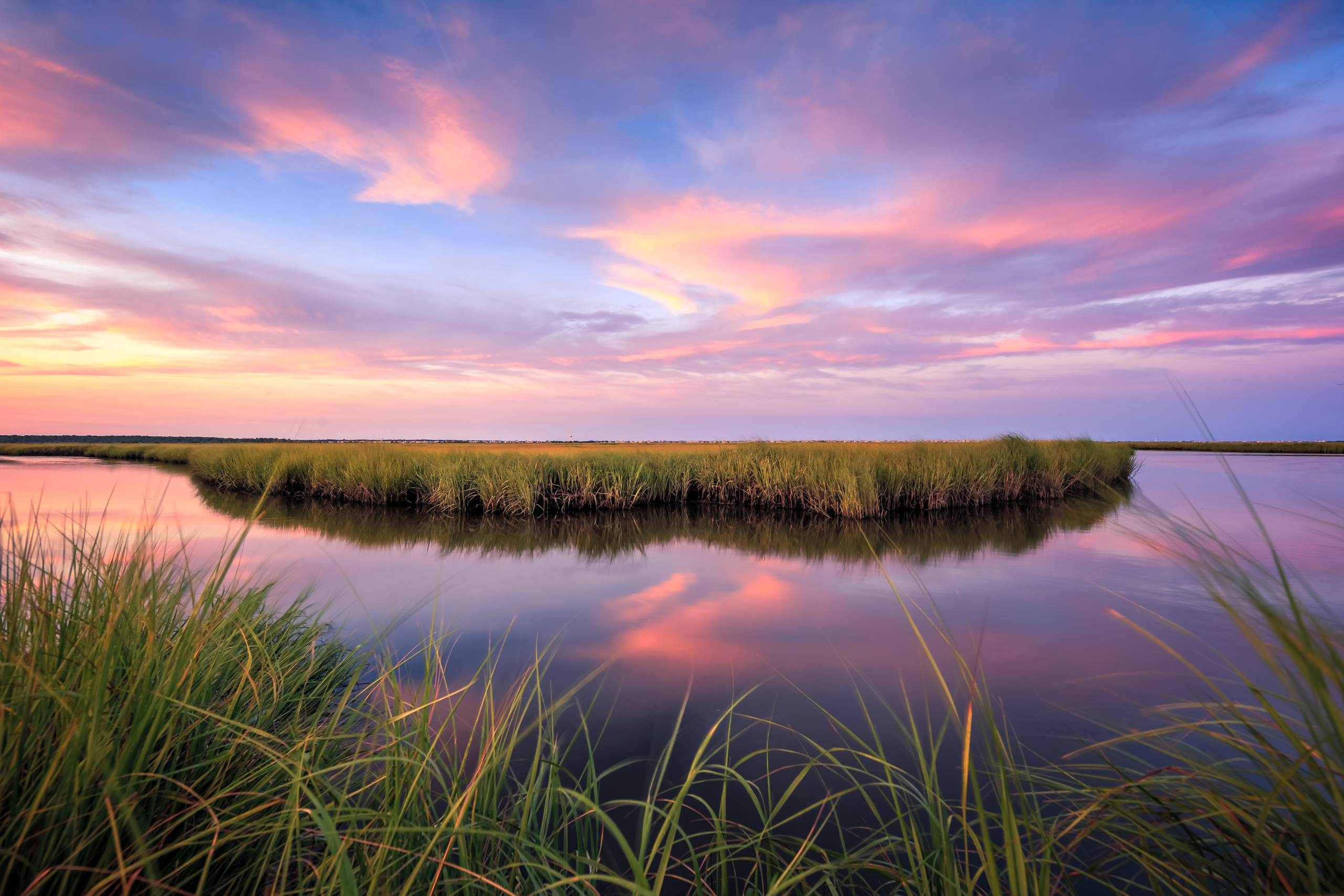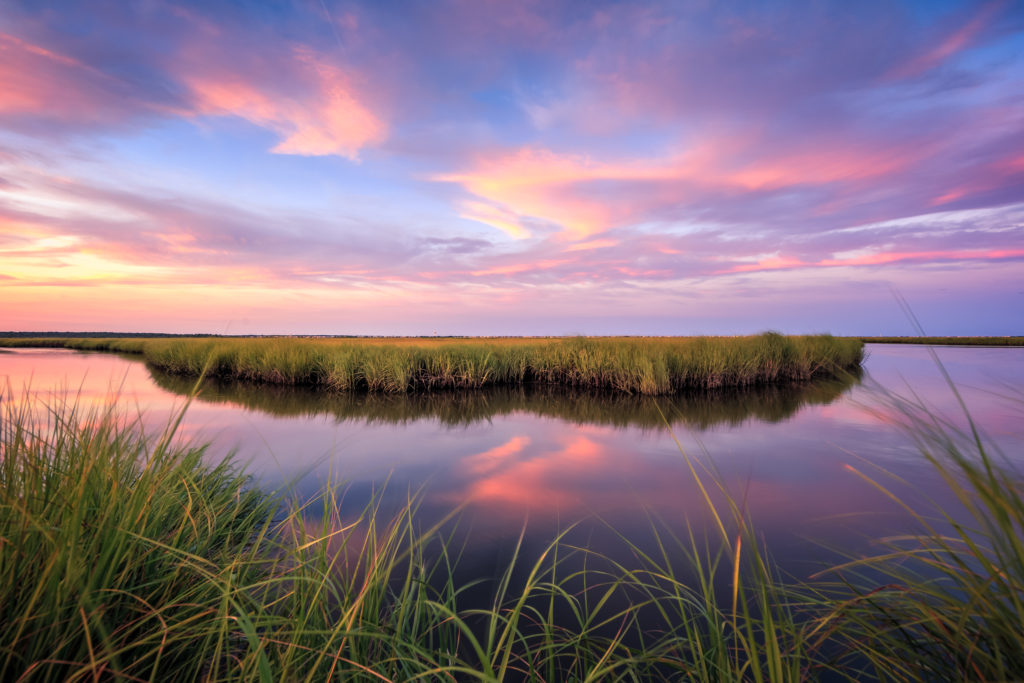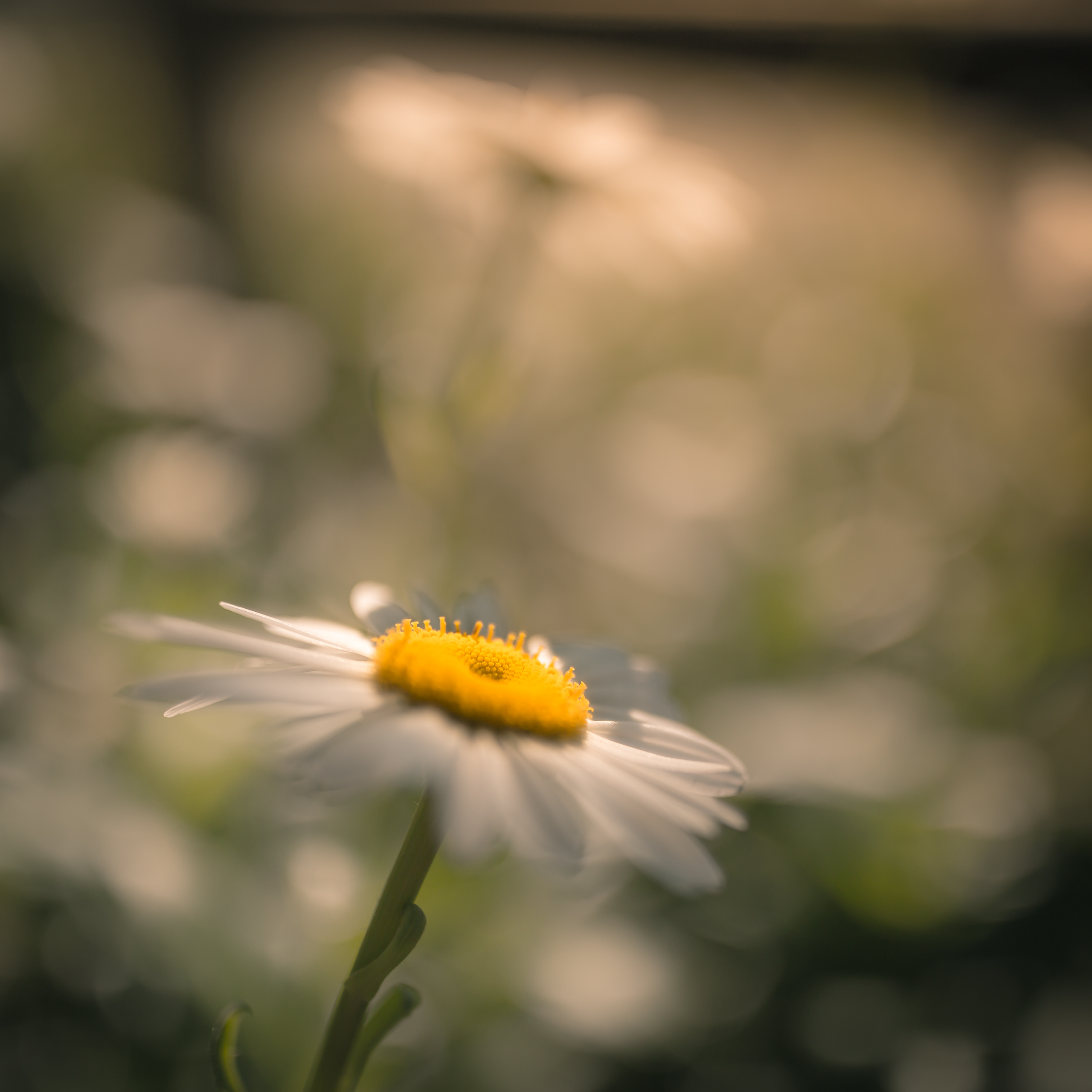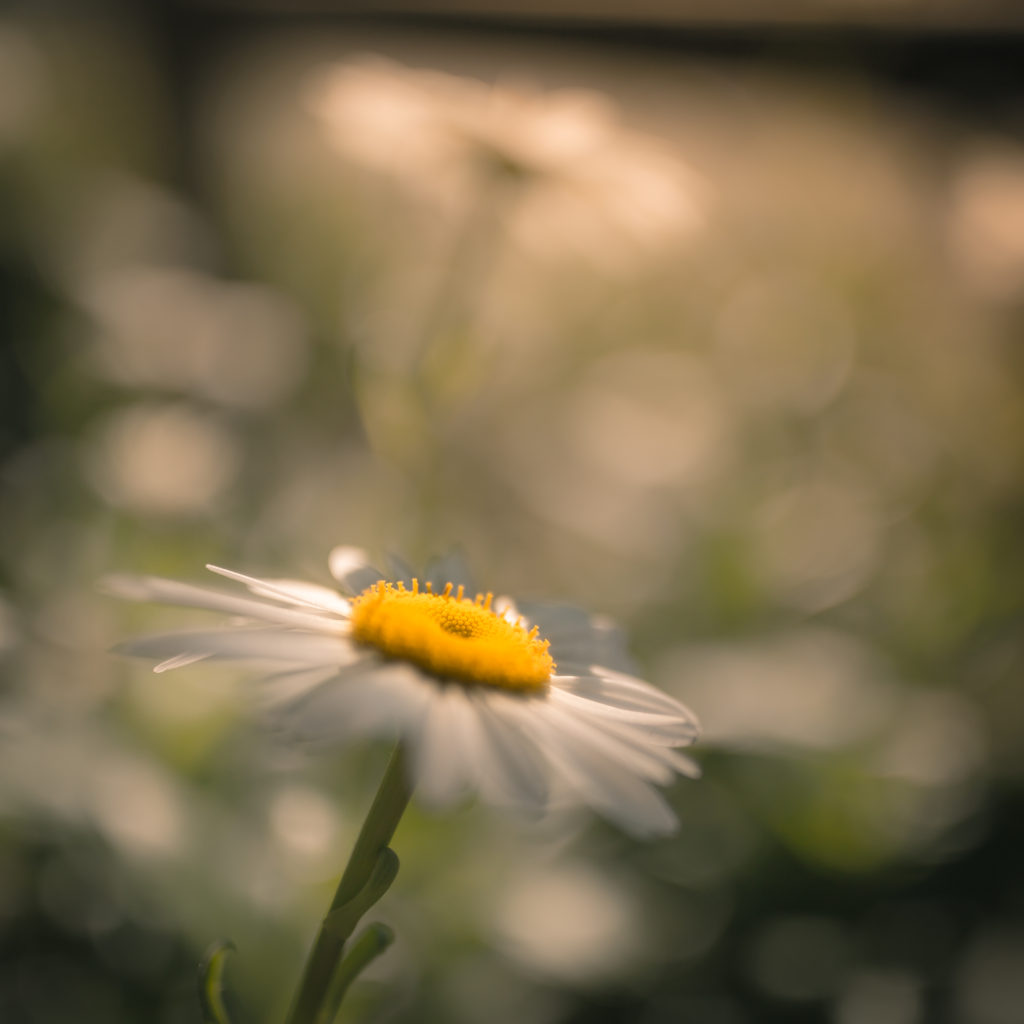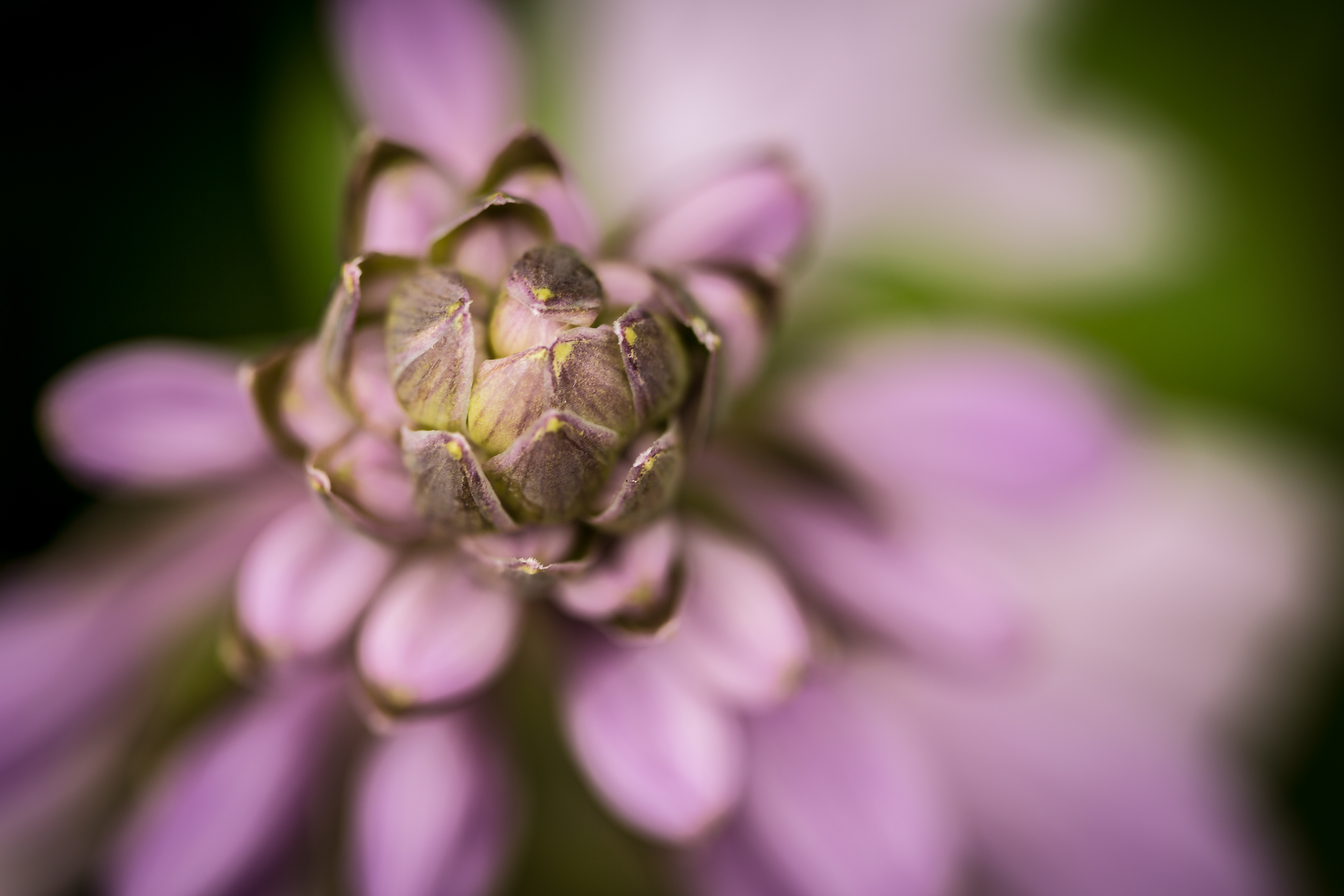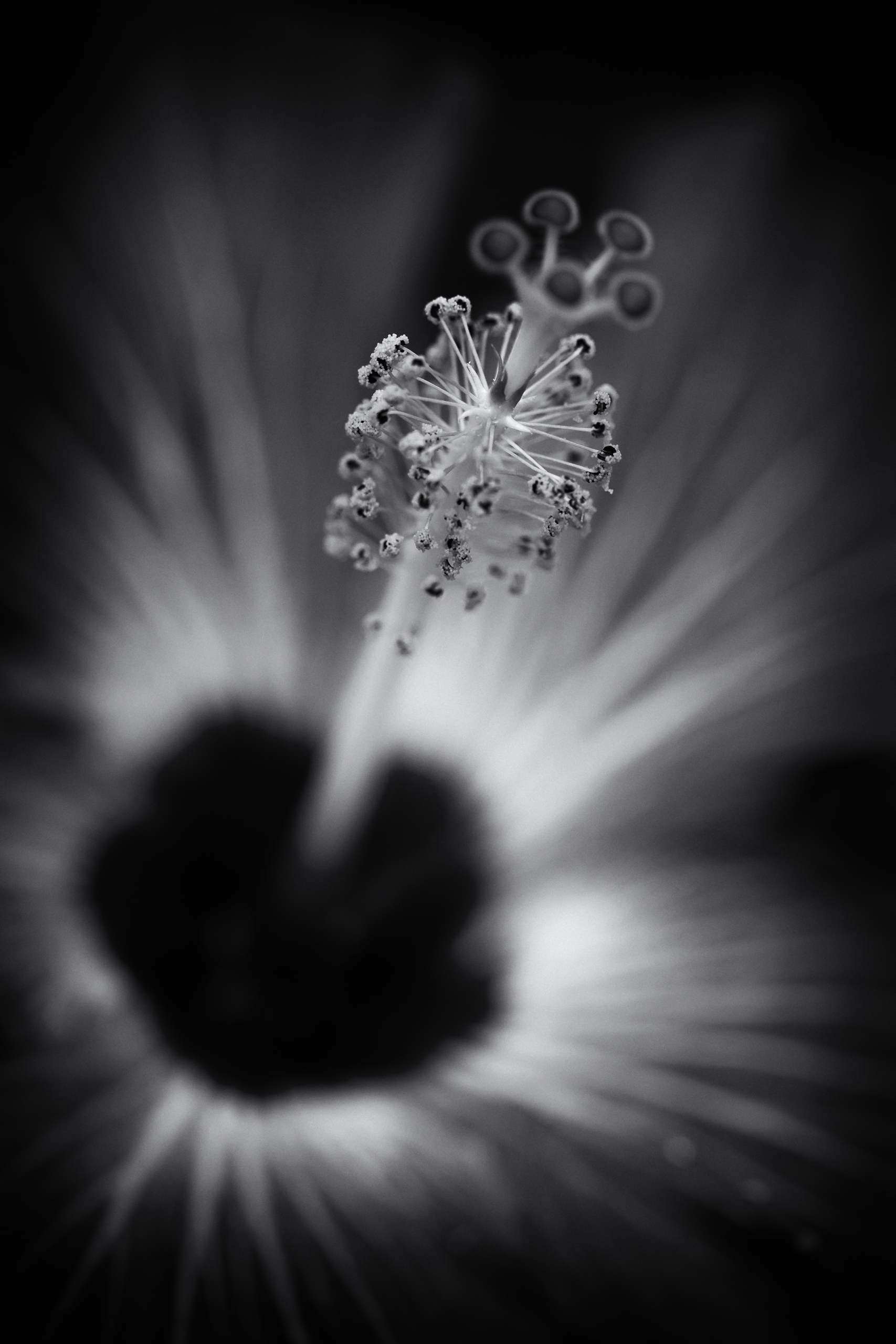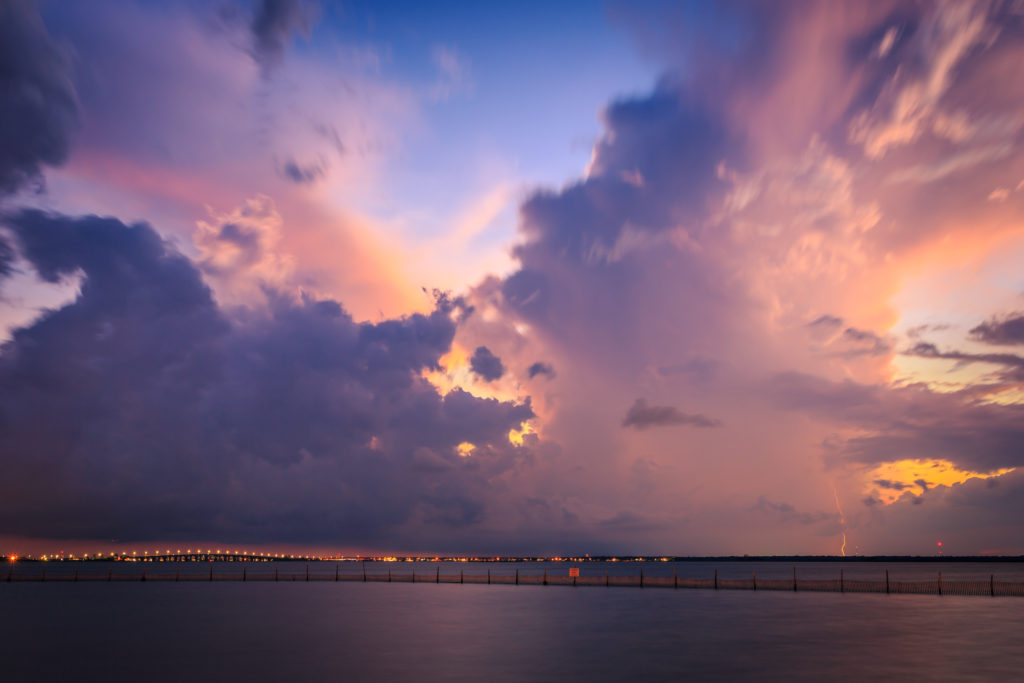
Saturday, August 6, 2016, the unexpected came to pass. Mrs. and Mr. Weather NJ came by to scoop me for a little weekend dinner action on Long Beach Island. We brought along the camera equipment just in case the sunset would pop. We were cutting it close on time and originally decided that Cedar Run Dock Road would be our best photo destination considering the time crunch. Instead—and in true Jon Carr fashion—the turn for Route 9 South was completely missed and with it so too was Dock Road. Insert audible. With what appeared to be a cloud out at our back we made for Surf City Sunset Park. Crossing the new Manahawkin Bay Bridge my expectations were low.
Upon arrival at the park the place was loaded with revelers and cellphone cameras. I always feel good when I see folks out taking in the sights and taking their shot at landscape photography. The more the merrier, I say. To the south a crescent moon could be seen, while to the west a mean shelf cloud was barreling eastward. We had known a line of storms was heading to the area, but honestly the radar was not all that impressive. Are you noticing a theme of underselling the evening yet? Eager to capture the shelfie, I took out the camera and swapped my 100mm lens for the ultra wide 14mm. It seemed like the prudent move except the humidity had a better idea. Instant fog problems—my lens was immediately coated in moisture. That quickly put the kibosh on my shooting—or so I thought.
As the clocked ticked away the initial line of thunderstorms moved through. Aside from a solid gust front and some dramatic clouds, it didn’t produce any lightning or rainfall at our location. Just a few bolts of lightning to the north. A few minutes later things started to get interesting. About 30 miles to our west, over Hammonton, New Jersey, a storm cell began to redevelop. Radar proof need not apply as its growth was betrayed by a towering cumulonimbus cloud growing before our eyes. Like something off the set of Ghostbusters this monolith of water vapor and energy grew larger and closer. Its cloud tops reaching high enough to begin sheering off into an anvil. It was awesome. The gust front, it seems, provided just enough of a trigger to ignite the latent storm growth. As a shooter this presented the perfect opportunity: an isolated cell from the perfect vantage point with no rain to mess up the shot. Also, by now enough time had passed to free my lenses from their foggy prison. I was back in the game.
From there on it was all about finding the optimal frame to capture the Manahawkin Bay Bridge; the impressive cumulonimbus tower; and the pastel glow that reignited at dusk thanks to the angle afford by the high cloud tops. It was the perfect storm—from no expectations came the best storm setup I have encountered to date. From there on out I put my 35mm lens to work, making long exposure after long exposure, hoping to time up a shot just right with a lightning strike. Fortunately I got some cloud to ground action mixed in with a truly dramatic sky. I couldn’t be happier with how things panned out. I now have in my possession my best storm photograph to date.
Oh, and as for food—an LBI dinner never happened. That, too, was an audible to Element on account of large crowds. Sometimes you just have to go with the flow.
Interested in buying? Purchase
